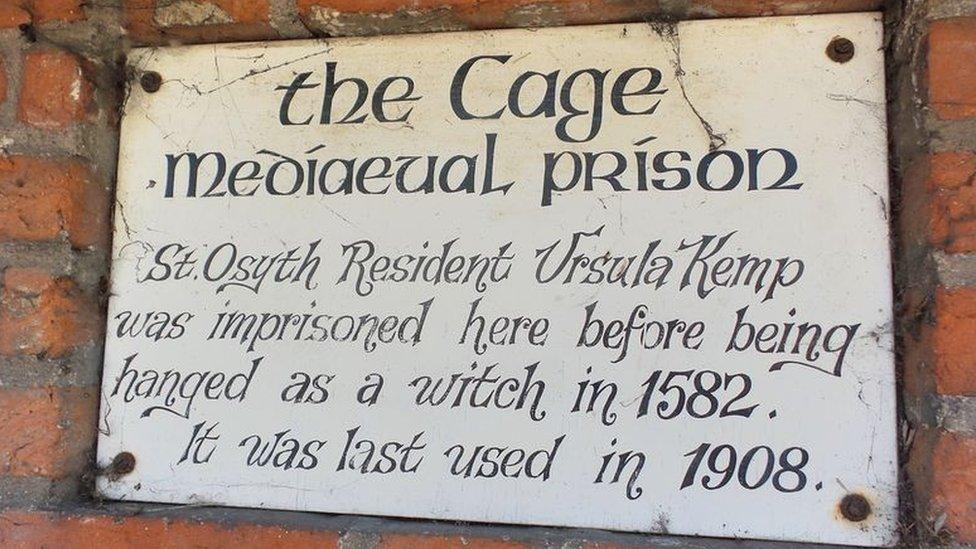St Osyth witches story told in Halloween museum exhibition
- Published
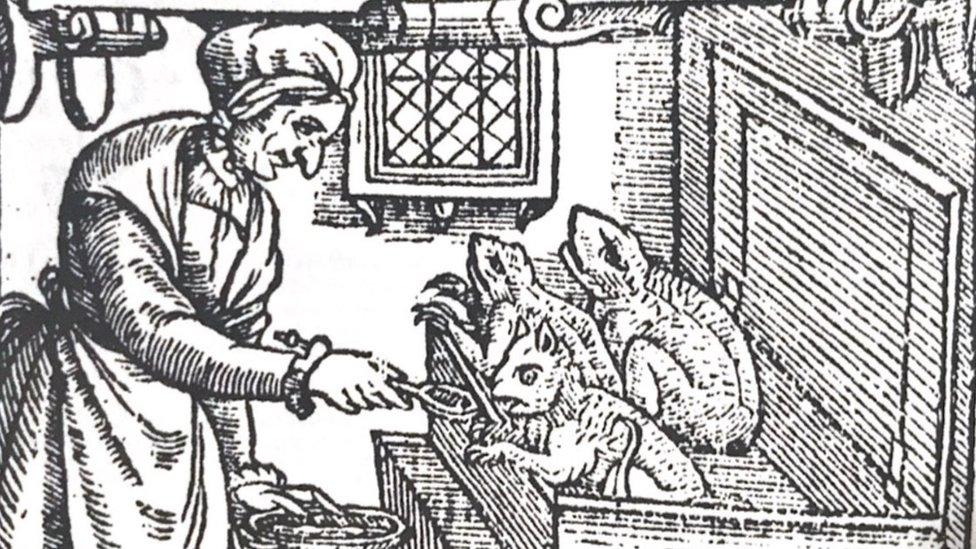
Witches were often depicted with familiars - imps or small animals kept as their attendants
The haunting story of 16 women accused of witchcraft in a small rural village is being told in a new exhibition.
The St Osyth Witches event takes place over the Halloween weekend at the village's museum, near Clacton, Essex.
Fourteen women were accused of being witches in 1582 and put on trial, the most famous of them, Ursula Kemp, was hanged, alongside Elizabeth Bennett.
The event tells their stories as well as two other St Osyth women executed as witches in the 17th Century.
A film telling the story of the village's "first witch" - Ursula Kemp - will be screened as part of the event.
The museum's website says Kemp was a poor midwife in the village who fell out with another woman and was accused of using a familiar to kill the woman's child.
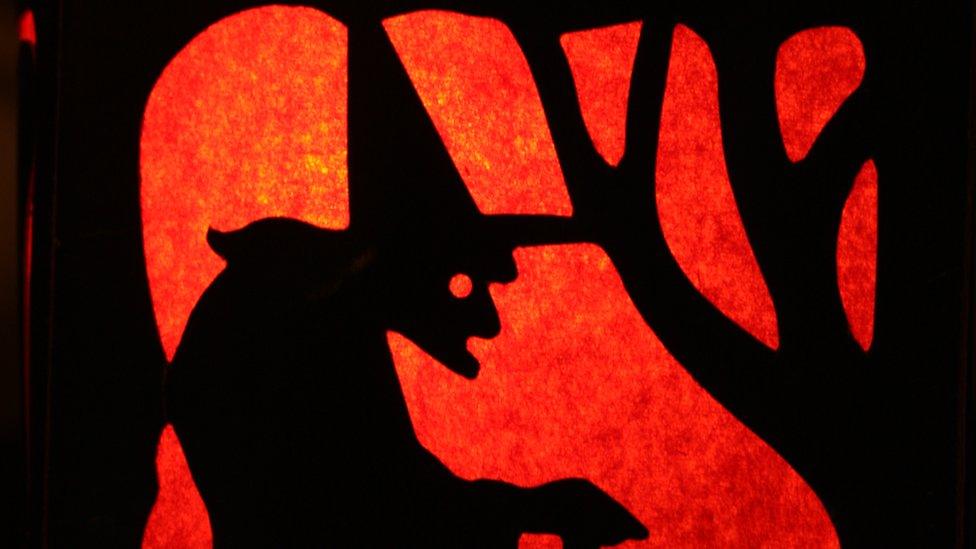
Kemp confessed in court to having four familiars - two cats, a toad and a lamb.
During her trial she named several other women in the village as witches, and they in turn named others.
In all, 14 women were tried for witchcraft.
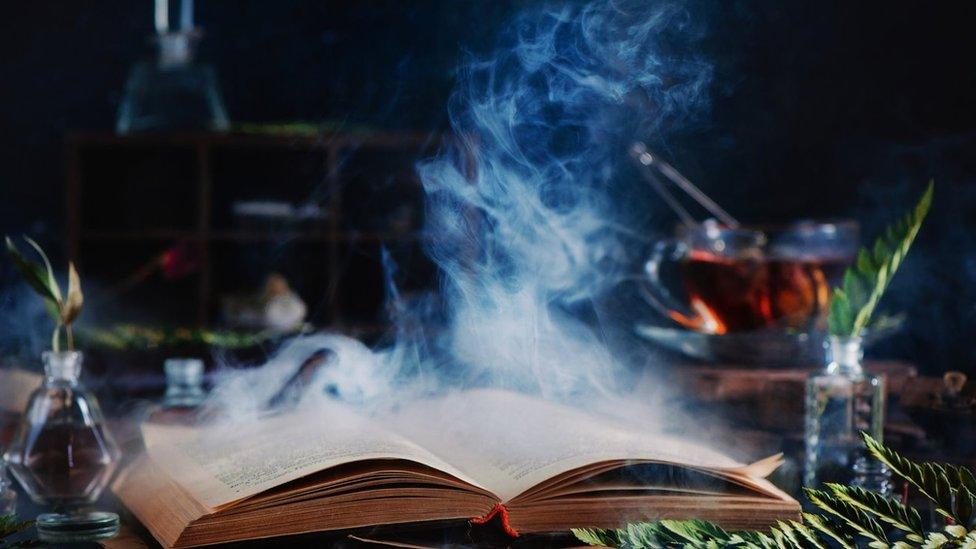
Sixteen women from St Osyth were accused of being witches
Before her trial, Kemp was reportedly kept in a building known as the Cage, which now forms part of a house in the village.
A plaque on the house states the Cage was a medieval prison, and "Ursula Kemp was imprisoned here before being hanged as a witch in 1582".
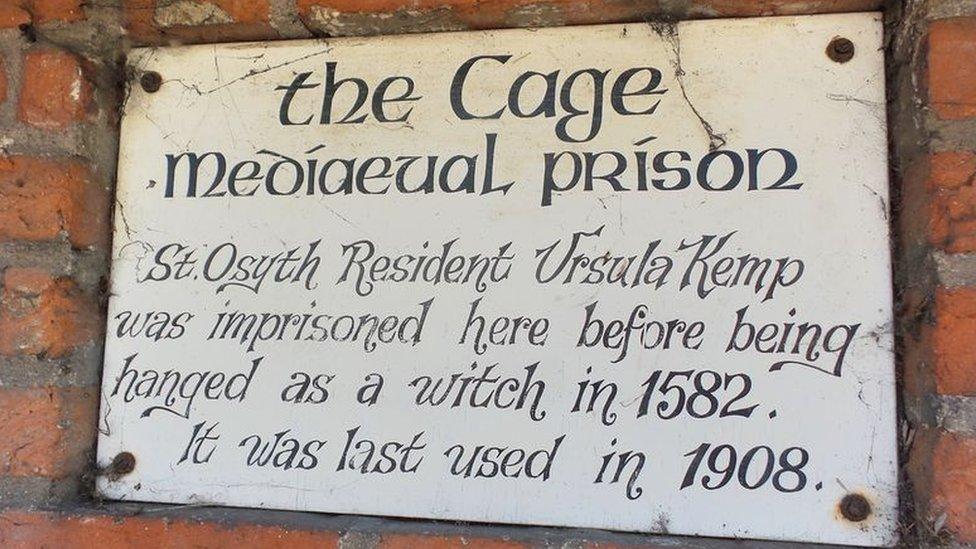
A plaque outside a house remembers Ursula Kemp
Nigel Jeskins, from St Osyth Museum, said although they are sure Kemp and Elizabeth Bennett were executed, they cannot be certain of the fate of the other 12 women, "although some may have died in prison".
The village - and many parts of eastern England - were subject to a further witch hunt between 1644 and 1647, presided over by Witchfinder General Matthew Hopkins.
Hopkins (c.1620-1647) lived in Mistley, Essex and his first accusation was in neighbouring Manningtree.
As many as 300 people were executed for witchcraft in eastern England during this period.
Nineteen people in Chelmsford were hanged for witchcraft in one day, including two from St Osyth, the museum said.
The laws against witchcraft were repealed almost a century later, in 1736.

Matthew Hopkins earned a small fortune securing evidence against supposed witches
Mr Jeskins, said: "The story of the St Osyth witches, with its connections to the supernatural, talking imps and magical potions, contains everything we think of today as being associated with Halloween.
"However, these women were very real, and it's important that their story is heard so we can try to understand how this type of hysteria could result in such barbaric acts within so small a community."
The museum's event includes stories of the local women, information about the origins of Halloween, the history of witch hunting and arts and crafts for children.
The St Osyth Witches free event takes place at the museum on Colchester Road, St Osyth on Saturday 30 October from 10:00 to 16:00 and on Sunday 31 October, from 10:00 to 19:00.

Find BBC News: East of England on Facebook, external, Instagram, external and Twitter, external. If you have a story suggestion email eastofenglandnews@bbc.co.uk, external
- Published26 October 2021
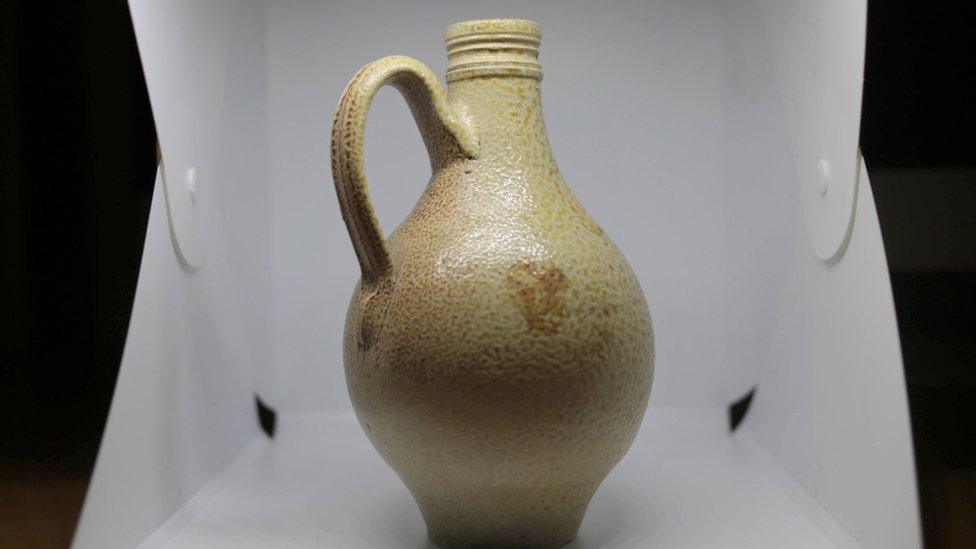
- Published31 October 2019

- Published15 February 2019

- Published10 December 2017
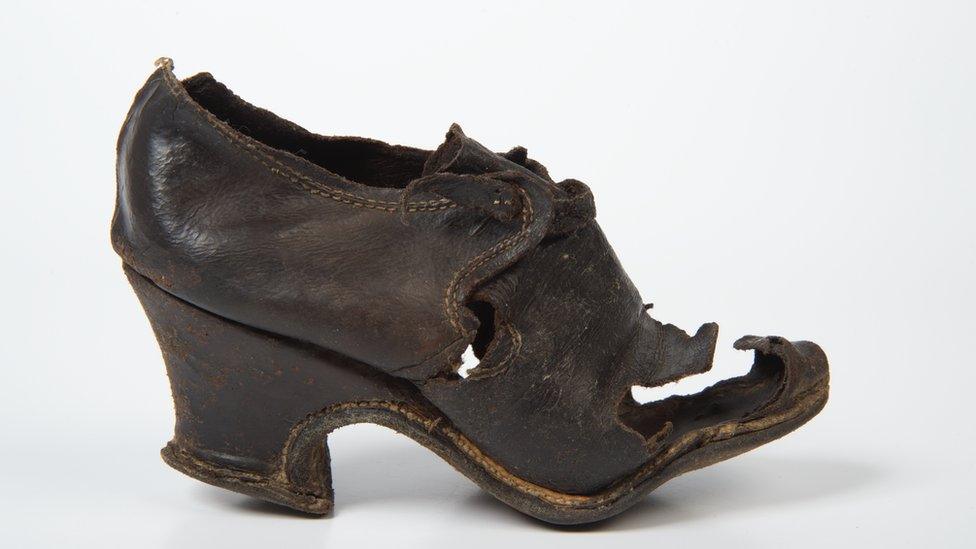
- Published1 February 2016
